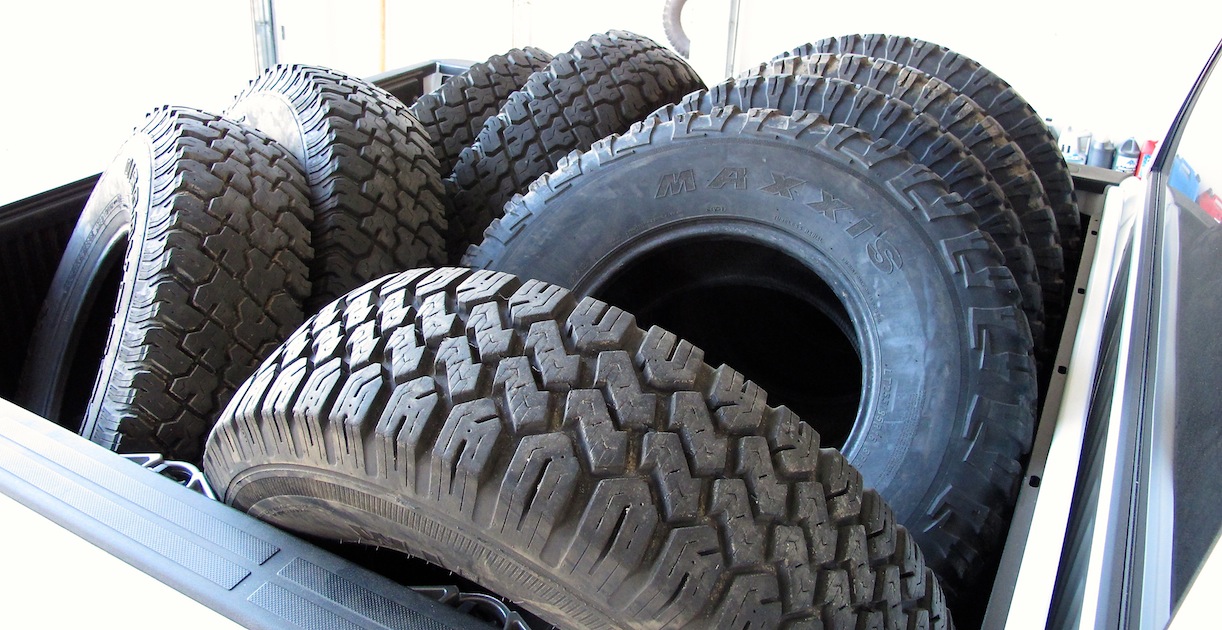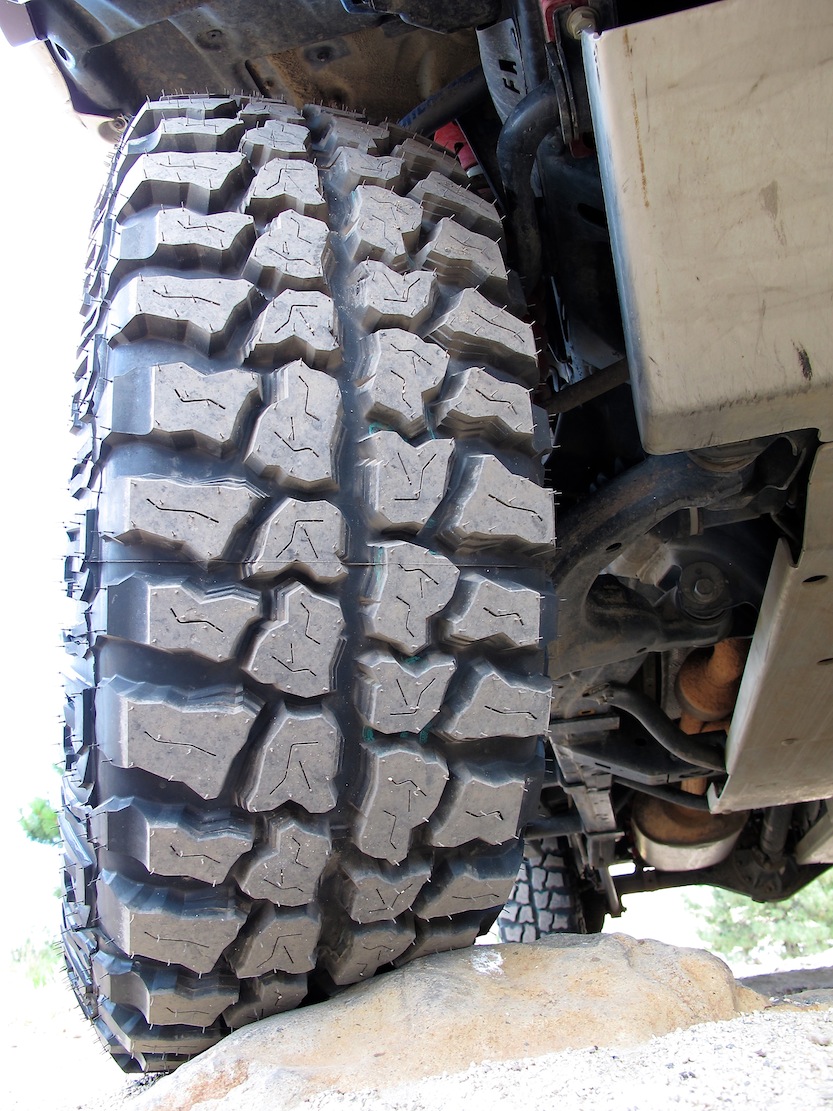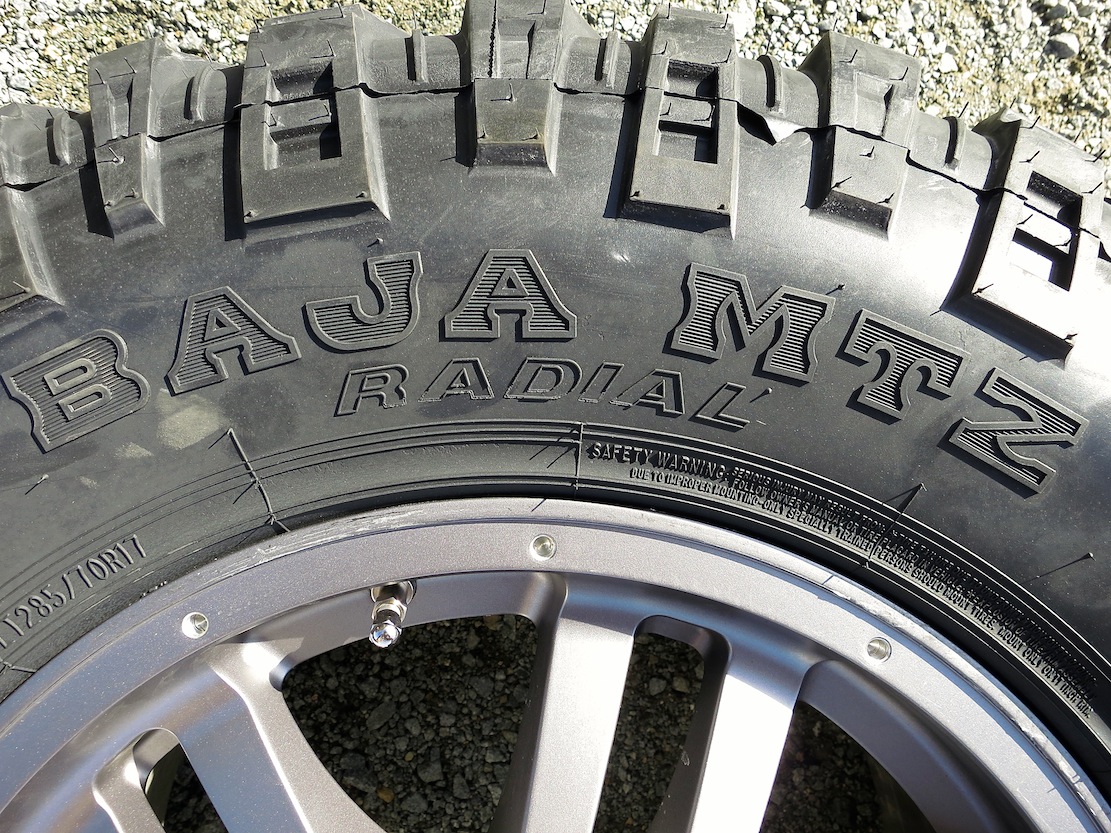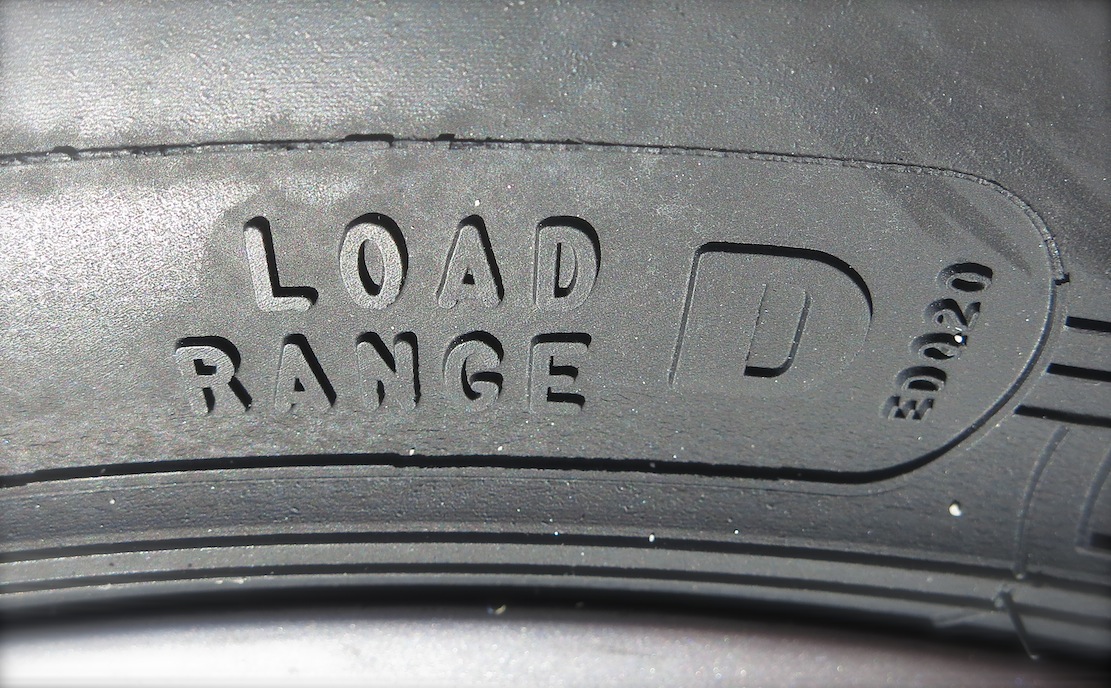With all my posts about tires it’s not surprising that I receive mail asking for opinions and advice on tires. A gentleman named Guy from Washington recently asked for my input. Below are his questions and my replies. My review and comments on the 255/85R16 Toyo M/T on my old F-350 will continue.
Howdy, hope you can help me a bit with a tire selection dilemma: 2012 two-door JK, that I use as a daily driver here in Wenatchee, Washington. Also do a couple of road trips every year, 2000 – 3000 miles each. Hunting. Fishing. Some overlanding. Did the 600 mile WABDR this past summer. I’d like to use the same tires all year, snow, rain, heat.
The two-door JK is a nice platform, I was shopping Jeep JKs online just a few days ago, including the two-door models. Sounds like your Jeep sees a nice mix of uses. As much as I’m a tire aficionado who tests and often owns more than one set of tires for a particular platform, there are advantages to picking a set of all-around treads and using them until they’re ready to be replaced.
Very basic Jeep. Manual transmission, 4.10 gears, aftermarket air lockers front & rear. 1.5″ Teraflex leveling kit (springs).
Sounds nicely set-up. There’s much to be said for lower lifts, and I love manual transmissions. Aftermarket selectable air lockers, presumably ARB Air Lockers, are accessories that offer a level of control over traction and wheel rotation that is only available with selectable lockers.
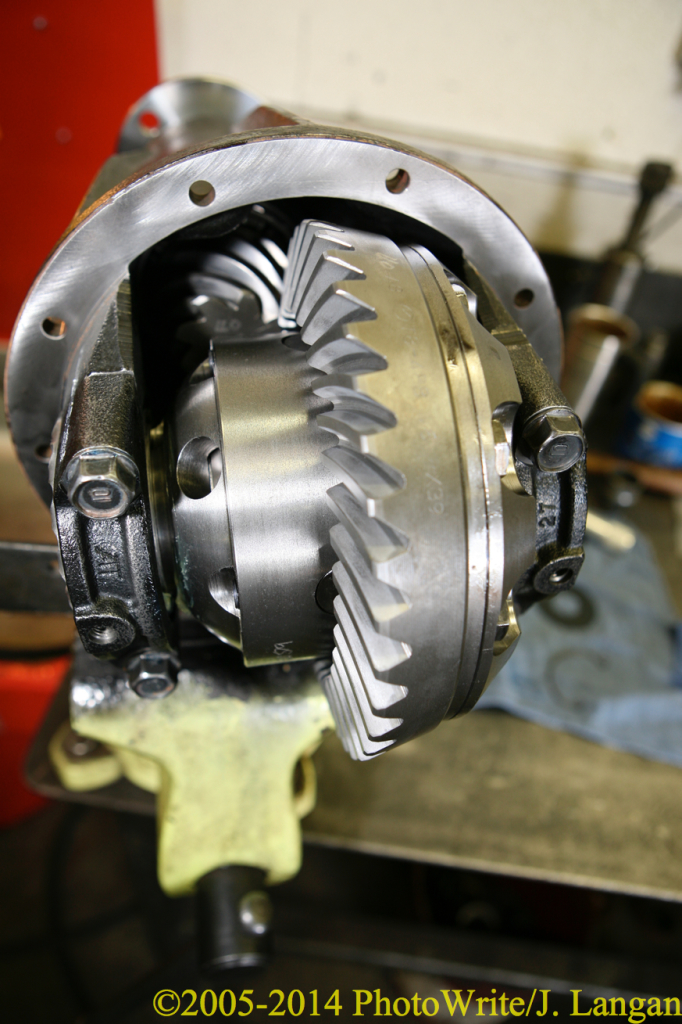
I bought a set of used 16×9″ rims and E-rated 265/75/16 BFG AT’s a week or two after I got the Jeep. Killer deal, $1k for five rims and tires. I’ve put another 25,000 miles on those tires, and they’re getting worn. So I need tires soon. I could just replace them with more 265’s, but they’re a little short.
Several years ago the first aftermarket tires I put on my V8 4Runner were 265/75R16. I agree that 265s are a bit short, most are notably smaller than 32-inches tall. Depending on the tire and tread chosen and the actual height, the advantages to stepping up to a 33-inch-tall tire are quite noticeable. Even with a short thirty-three (32.8″) the approximately one-inch in overall diameter will lift your Jeep a solid half-inch, everywhere. The best lift is tire lift.
I like the 255’s, roughly 33×10’s. Nice! But, I’m afraid they won’t work with my 16×9’s.
You are correct, in addition to being too wide according to the tire manufactures, a 9-inch wheel is a poor choice for a 255 tire for our uses, while a 7–8 inch wheel would be prefect. A 9-inch wheel is also wide for a 265, I prefer to run a 265/7x tire on a stock 7–8 inch wheel. I’ve not shopped for Jeep wheels recently, but I’d image there are many high-quality, original equipment, aluminum take-off wheels for sale on Craigslist. I’ve been a huge fan of the 255/85 size since the early 1990s and have been using them steadily on at least one of my four-wheel-drives since 1998.
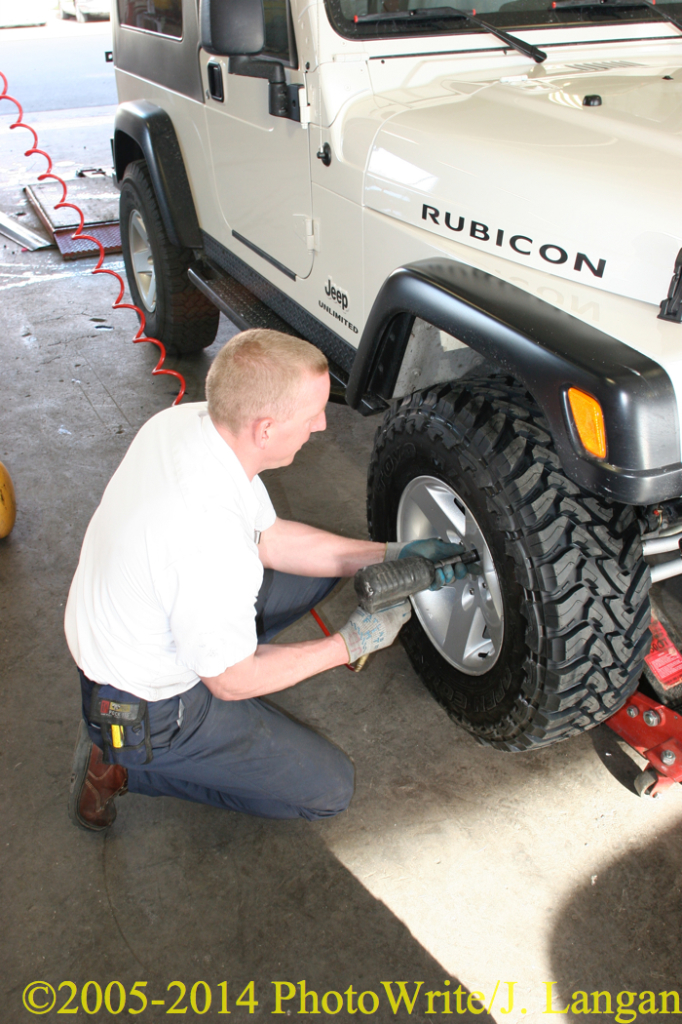
Simple solution is just 285’s, but… I fear that’s an awful lot of tire for a little two-door JK… Maybe ditch the 16×9 wheels? I do like the way they look, but I could swap to a more narrow wheel & tire combo happily.
Surely 285s will work on your 9-inch wheels and that is a simple solution. Tread choices in 285/75R16 are almost endless. However, I’m not a fan of using wheels that are on the wide end of specifications. For 285s I prefer to run a 7.5-inch (the minimum) or 8-inch wheel, both for how the tire fits the wheel and the narrower overall width. I don’t care for tires and wheels that protrude further than necessary. I’ve run a few sets of 285 tires over the past several years out of necessity or a desire to run a particular tread that was not available in a 255, but I’d almost always prefer a 255/8x if I could get what I’m looking for.
Ditching the 9-inch-wide wheels would be my suggestion regardless of what tire you purchase. Choosing wheels that are at least 7.5-inches wide but no wider than 8-inches, will allow you run any of the tire sizes we are discussing here; 265/75R16, 255/85R/16, or 285/75R16.
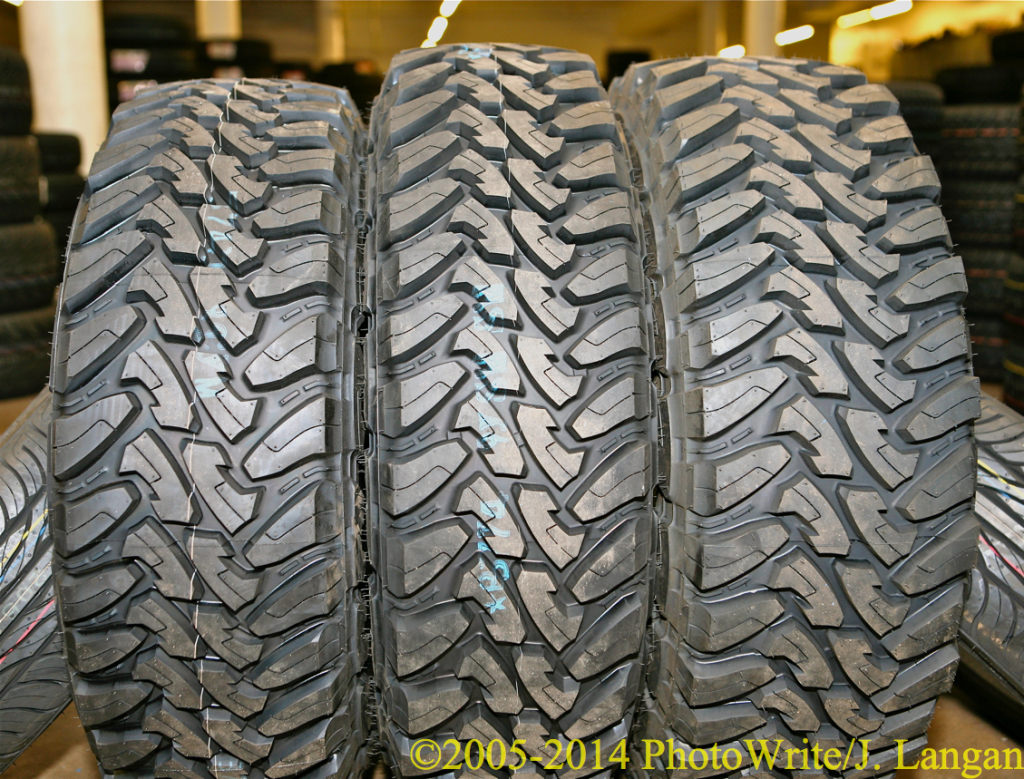
LT265/75R16E, LT255/85R16E, LT285/75R16E
Have four heavy-duty old style tire chains that are a little big on 265’s and fit 285’s real snug.
One old set of tire chains I have fit both 265/75 and 255/85 tires similarly, I believe both tire sizes use the same chains. My chains are too small for 285s.
And of course I haven’t quite made up my mind re tire type either. The AT’s have done surprisingly well, but I find myself looking hard at the Toyo MT’s and Mickey Thompson MT’s. My son runs 33×12.50 Mickey Thompsons – and they’re terrific off-road, but I’m not that impressed with them on pavement.
When I finish telling the story of using the Toyo M/T on my F-350 the rapid wear might surprise a few readers. I’m a fan of Toyo tires, but when I can, I much prefer a tire that will offer less noise and longer wear. Of course tire wear is often specific to the platform, driver, and use.
There are a set of Mickey Thompson MTZ tires sitting in my shop mounted and ready for use on my Tundra, but have only seen about 2,000 miles of travel. I like them, but I’ve preferred the Dick Cepek FC-II treads I’ve been running for most of the Tundra’s miles. The FC-II (replaced by the Fun Country) has less noise, excellent siping, and have been slow to show wear on everything from an F-350 diesel, the Tundra, and a built V8 4Runner. Of course neither the Fun Country nor the Mickey Thompson MTZ tread are available in the 255/85R16 size.
The biggest decision you have to make is tire size. If you chose either a 265/75 or 285/75 your choices are many, both a blessing and a curse. If you decide to try a set of 255/85R16 rubber, then it will be relatively easy because the choices are relatively few.
If the 255 size wins, and you decide you don’t want a loud or faster wearing mud-terrain tire (Maxxis Bighorn, Toyo M/T, or BFG KM2), I’d suggest you consider a set of Cooper S/T MAXX. The S/T MAXX has only been manufactured in the 255/85R16 size since the first quarter of 2014. I’m currently running a set in the 255/80R17 size on my 4Runner.
Copyright © 2014 James Langan/PhotoWrite Intl.

